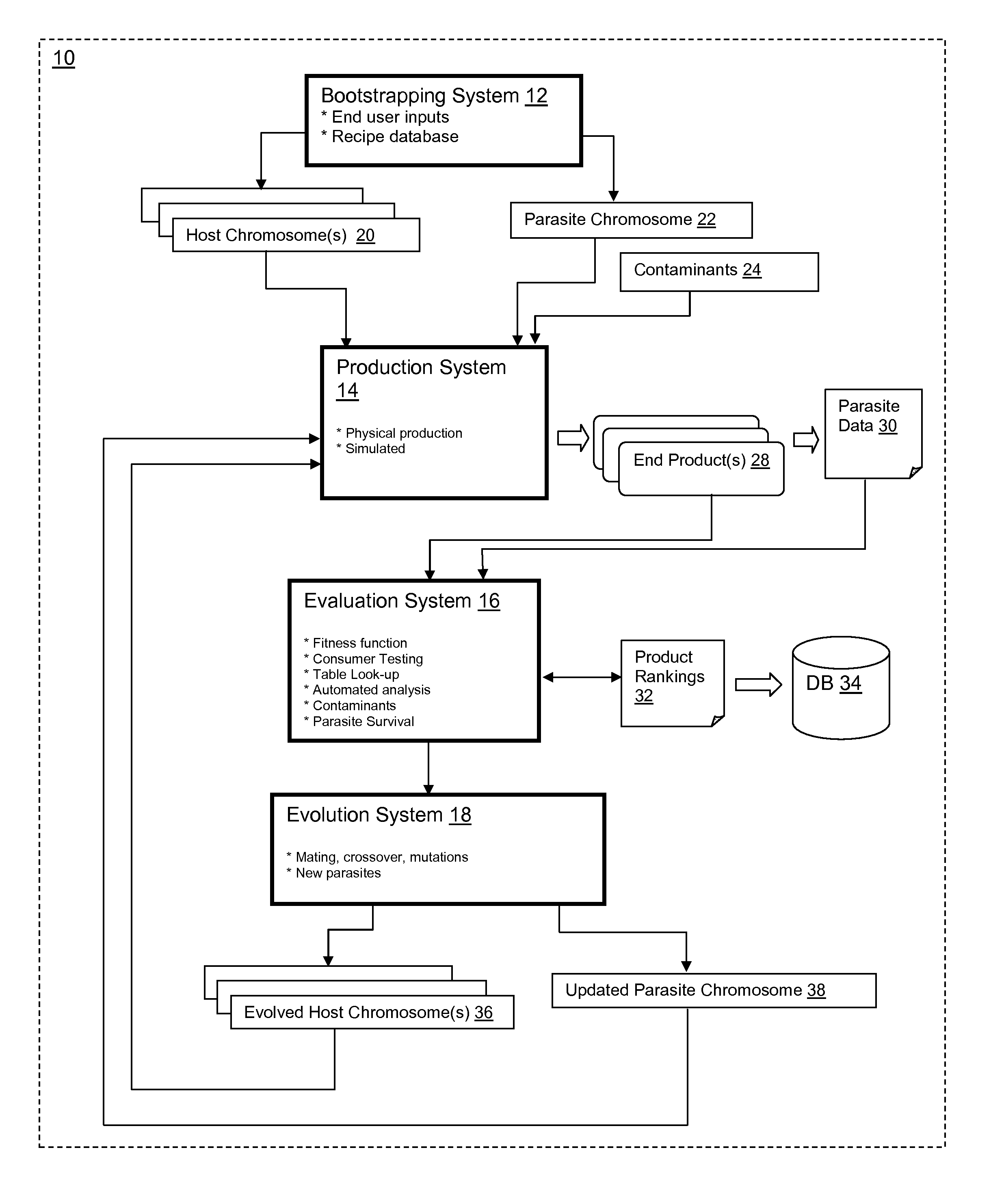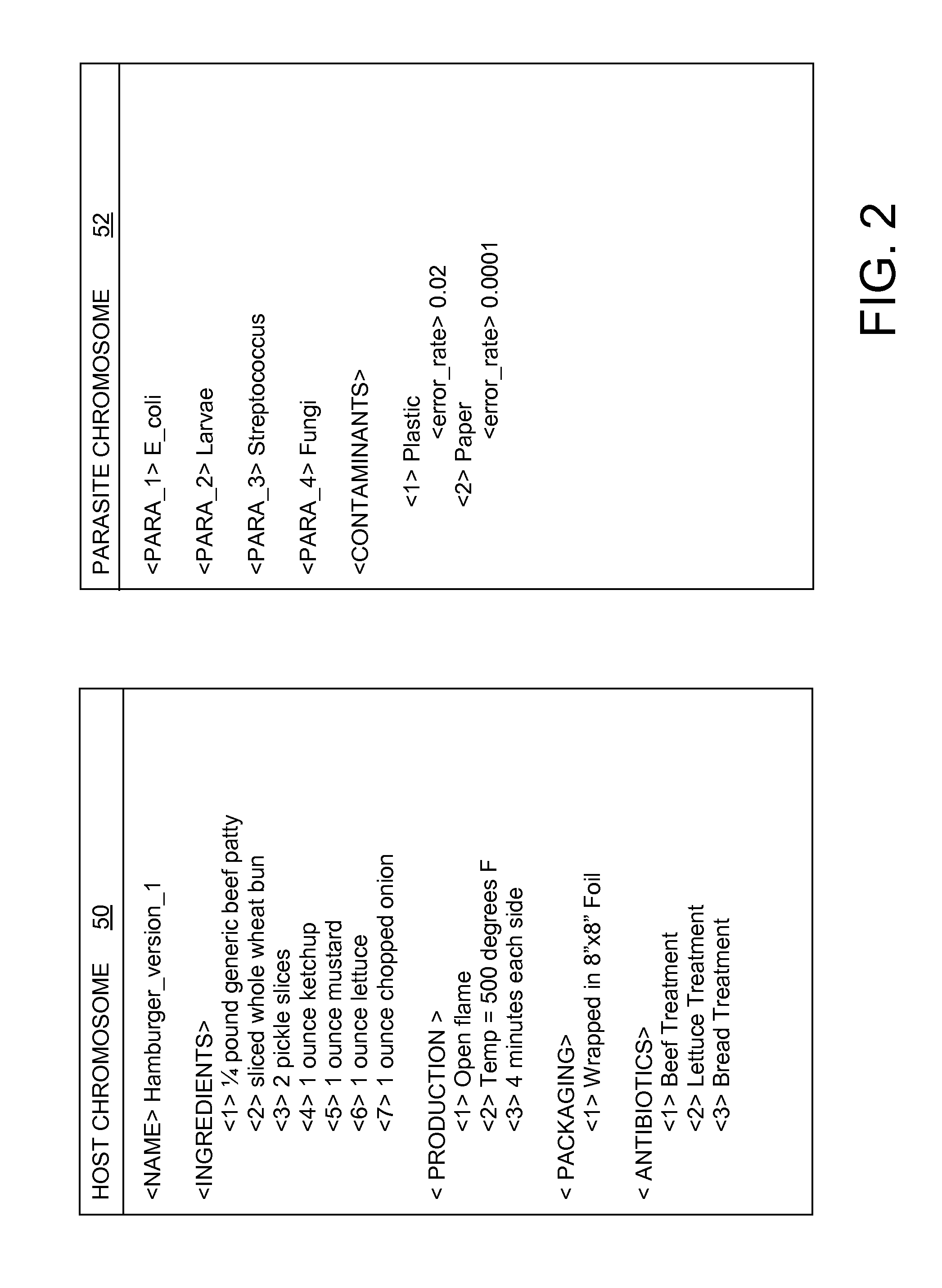Co-evolutionary product optimization
a product optimization and evolution technology, applied in the field of co-evolutionary product optimization, can solve the problems of little ability of businesses to quickly interpret personalized requirements and deliver customized products efficiently, and may change preferences, so as to enhance food production
- Summary
- Abstract
- Description
- Claims
- Application Information
AI Technical Summary
Benefits of technology
Problems solved by technology
Method used
Image
Examples
example methodology 1
[0027]1. Obtain a plurality of product characteristics to produce a feature vector (e.g., specified by a customer)[0028]2. Determine which of the elements of the product characteristic model match those characteristics obtained;[0029]3. Measure the product (rate of change, acceleration, mass, chemical shifts, texture, etc.) and encode into a genetic algorithm representation, i.e., host chromosome;[0030]4. Measure the “parasites” and encode into a genetic algorithm representation, i.e., parasite chromosome;[0031]5. Include a probability of contaminants in the parasite chromosome, e.g., the measured probability 6-sigma of dropping a piece of plastic in the food;[0032]6. Measure the fitness of parasite / host pairs;[0033]7. Perform genetic algorithm actions to produce new chromosomes;[0034]8. Assemble the products and create chromosomes again with an entropy factor, e.g., when to get chemicals that are not in the system; and[0035]9. Continue iterating until exit criterion is reached, e.g...
example methodology 2
[0040]1. A set of chromosomes represent ingredients for a product in the form of a feature vector[0041]a. The feature vector is bootstrapped either from an existing product or from one iteration of a product assembly[0042]2. A set of parasite chromosomes are paired with product chromosome[0043]a. Parasites / bacteria are found using nuclear magnetic resonance imaging and examining chemical shifts, or any other actual or simulated technique[0044]b. Contaminants, i.e., potential human or machine errors are identified[0045]c. The host / parasite paradigm is established[0046]3. Processes or assembly lines decode the product genotype (features)->a phenotype (ingredients)[0047]a. The host or product chromosome is akin to a recipe and process[0048]b. Parasite features are measured at the end to encode a parasite chromosome; phenotype->genotype[0049]c. The chromosomes become diploids where a pair represents a host and a parasite[0050]4. Each diploid is measured with fitness that is translated f...
PUM
 Login to View More
Login to View More Abstract
Description
Claims
Application Information
 Login to View More
Login to View More - R&D
- Intellectual Property
- Life Sciences
- Materials
- Tech Scout
- Unparalleled Data Quality
- Higher Quality Content
- 60% Fewer Hallucinations
Browse by: Latest US Patents, China's latest patents, Technical Efficacy Thesaurus, Application Domain, Technology Topic, Popular Technical Reports.
© 2025 PatSnap. All rights reserved.Legal|Privacy policy|Modern Slavery Act Transparency Statement|Sitemap|About US| Contact US: help@patsnap.com



